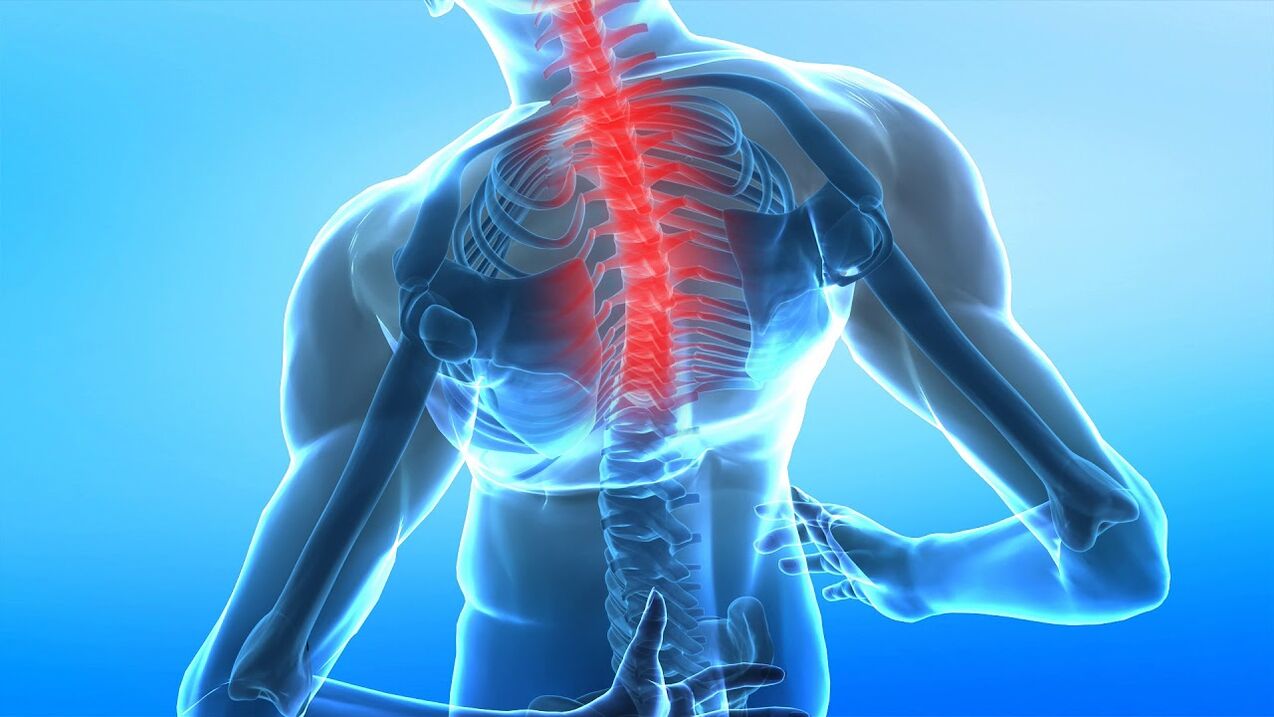Spinal osteochondrosis is a complex disease that can affect the thoracic, lumbar and cervical spine. Consider the most common symptoms and features of treating the disease at home.

Common symptoms of spinal osteochondrosis
Osteochondrosis of the spine occurs in 60-70% of people over the age of 40. Recently, it is not uncommon for young people in their 20s to 30s to suffer from osteochondrosis.
Depending on which part of the spine is affected by the disease, its clinical picture is determined. The defeat of the cervical region is characterized by the appearance of the following symptoms:
- dizziness that occurs spontaneously and increases when turning the head (especially with sudden movements);
- Headaches that are not relieved by painkillers. Pain is often provoked by motor activity in the cervical region;
- pain in the shoulder girdle and girdle of the upper limbs;
- Visual disturbances: weakening, flickering before the eyes of "flies" and multi-colored circles;
- Hearing loss: sensation of ringing in the ears;
- episodes of loss of consciousness;
- Snoring in a dream is a consequence of constant tension in the muscular apparatus of the neck;
- In more advanced cases, neurological symptoms appear: numbness of the tongue, voice change, etc.
For thoracic osteochondrosis are characteristic:
- Pain in the chest, shoulder blades, provoked by physical activity, hypothermia. The pain occurs most often at night. Increased pain can be triggered by taking a deep breath;
- Feeling of compression of the chest and the appearance of sharp pains in the intercostal spaces (especially when changing body position and movement);
- Feeling of "crawling" on the chest and arms, sometimes - the neck. Numbness and coldness of extremities.
The basis of the clinical symptoms of osteochondrosis, localized in the lumbar region, are symptoms such as:
- Pain syndrome localized in the lumbar region. It can be painful, permanent or intermittent in the form of "lumbago" with irradiation of the right or left leg, as well as the perineum and sacrum. The pain increases significantly with movement and physical activity;
- numbness and coldness of the lower extremities, decreased sensitivity in the legs;
- With the defeat of the motor parts of the nerve chain, the development of paresis and paralysis of the legs is possible;
- Dysfunction of the organs of the genitourinary system.
How to get rid of osteochondrosis at home without drugs
For the treatment of osteochondrosis at home without medication, remedies of plant and animal origin are widely used. To be favoured:
- bee and snake venom;
- badger fat;
- Fir essential oil;
- camphor alcohol, etc.
These substances can be used as ointments, compresses, rubbing.
To relieve symptoms and slow the progression of the disease, it is recommended to use special orthopedic bedding: mattresses and pillows. In addition, special needle applicators can be used at home to improve blood circulation in tissues and relax muscles.
Proper nutrition plays an important role in the treatment of osteochondrosis. To improve the condition of cartilage and vertebrae, alcohol, coffee, tea, spicy foods, foods with a high content of extractive substances (fatty meat and fish, mushrooms) should be excluded from the diet;
Add to your diet foods and dishes that help restore and maintain the integrity of cartilage tissue: lean meat and fish, dairy products.
At home, you can also resort to the help of a professional masseur who will help relieve muscle tension in any part of the spine. With caution, you can do the massage yourself. Self-massage includes stroking, rubbing, kneading.
How to treat osteochondrosis with medication at home
Drug treatment of any disease, including osteochondrosis, should be prescribed by a qualified specialist. Only a doctor can prescribe the correct treatment regimen, taking into account all possible contraindications to taking one or another group of drugs. Currently, the following groups of drugs are used to treat osteochondrosis:
- Non-steroidal anti-inflammatory drugs. They can be used in the form of powders, tablets - for systemic use, and as ointments and gels - for local use. The former have a stronger effect;
- analgesics (painkillers);
- muscle relaxants and antispasmodics. Eliminate muscle spasms and pathological muscle tension;
- preparations for improving microcirculation and blood rheology;
- chondroprotectors. Provide resistance to the cartilage to the action of negative factors;
- Vitamins - mainly group B (B1, B6, B12). actively influence metabolic processes in the nervous system;
- antidepressants. Provides prevention of the occurrence of disorders of psychosomatic origin.
How to cure osteochondrosis at home with exercises
For osteochondrosis of any spine, orthopedists and rehabilitation doctors have developed special complexes of therapeutic exercises. In order for exercise to be beneficial, you need to follow a few simple rules:
- Use specially designed complexes;
- Movements should not provoke the appearance of unpleasant and painful sensations;
- Movements should be smooth, accurate and slow;
- You must do the exercises regularly. Even a minimal investment of time during the day yields incredible spinal benefits.
- Exercise therapy complexes should be carried out only during periods of remission of the disease.
In addition to complex therapeutic exercises, doctors strongly recommend that you always be physically active. Swimming and water aerobics, which are accessible to everyone at any time of the year, optimally relieve the back muscles.
Attention: Any treatment of osteochondrosis must be coordinated with the attending physician. Only in this case you can count on the maximum effect of therapy.

























